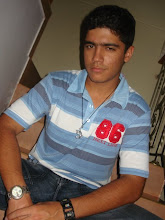 (Image: Guadalajara de Buga, 1880).
(Image: Guadalajara de Buga, 1880).
Guadalajara de Buga, is a small town of Valle del Cauca, and one of the oldest cities in Colombia, according to historians had four foundations in different places and at different dates.

At the time of the conquest, their lands were habited by various and brave warrior tribes.
Buga's name comes from the tribes that populate the upper valleys of the Cordillera
(Image: Guadalajara de Buga, view from the "Derrumbado") Central, where he founded "Buga la vieja". Etymologically speaking, the name of Buga is an Caribbean word and means "Pais de la Lanza(Land of the Spear)."
Note that Pijao, the Bugas and the Quinamanoes were Caribbean descent, from archipelagos Antilleans penetrated into the hinterland through rivers Colombians to settle in the mountains and valleys.
The first time was founded by the master Giraldo Gil de Estupiñan, in the headwaters of the Rio Buga La Grande, in the year 1555, giving it the name "Nueva Jerez de Los Ca

balleros" which was soon attacked, looted and burned by Pijao Indians, killing many, among them at the same founder. It was rebuilt in the territory of the Indians in the region Quinamanoes called "Babaya" which was located in the mountains at the foot of the Cerro Pan de Azúcar.
(Image: Guadalajara de Buga in The Valle del Cauca Department)
The second foundation was renamed the "Guadalajara de Buga" and third with the same name, later to become the capital of the province between 1834 and 1887, the year in which it was incorporated as a municipality. in 1908 was the capital of the department for twenty months to the creation of the Department of Valle in Cali as its capital.
The King Felipe II of Spain, gave him the title of City in the late sixteenth century and was granted its coat of arms for the many services rendered to the crown. Thus, in 1810 Buga was part of the confederated cities of Valle del Cauca and provided blood and patriotism of her children, including that of General José María Cabal, Francisco and Miguel Cabal. On January 11, 1822, the Liberator Simón Bolívar visited Buga, turning 26 and
December 27, 1829, two commemorative plaques placed in the houses where we stayed recall this event.
 Guadalajara de Buga's coat of arms
Guadalajara de Buga's coat of arms






